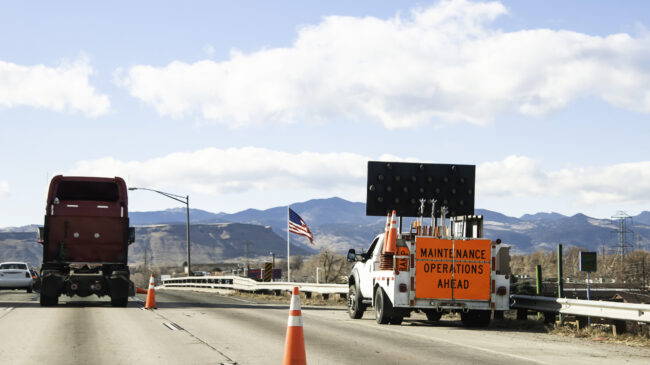Five years ago, Congress asked the Transportation Research Board (TRB) to convene an expert panel to assess the future of America’s 60-year-old Interstate Highway System. The TRB report conveyed chilling news: The aging pavement is wearing out and most of it needs replacing. Some Interstate corridors don’t have enough lanes to handle future traffic, especially trucks. And numerous urban interchanges are traffic bottlenecks that should be redesigned and replaced.
The price tag for this? About $1 trillion over the next 20 years.
Congress has shown little interest in addressing the need to modernize America’s most important highways (which handle 25 percent of all miles driven even though they represent just 2.5 percent of all lane-miles).
President Joe Biden’s proposed $2.3 trillion American Jobs Plan allocates only $115 billion for highways and bridges over eight years, none of it focused on Interstate modernization.
American motorists, businesses, and trucking companies deserve better.
A growing number of states (which actually own the Interstates and are responsible for their upkeep) have been doing studies on how they might self-finance the reconstruction of these vital arteries. Connecticut, Indiana, Michigan, and Wisconsin have funded studies on how the revenues from all-electronic tolling could be used to finance rebuilding their Interstates. Alabama, Louisiana, and several other states are also considering toll-financed replacement of major Interstate bridges.
If Congress is unwilling to fund Interstate modernization, the least it could do is to make tools available to any state willing to bite the bullet on self-financing such projects. Over the past 20 years, Congress has chipped away at the 1956 ban on using tolls on the Interstates. For instance, the Interstate System Reconstruction and Rehabilitation Pilot Program (ISRRPP) offered three states the option of using toll revenues to finance rebuilding one of its Interstates.
This turned out to be political poison because people living near the selected corridor complained about being singled out to pay tolls, unlike fellow citizens living near the state’s other Interstates. What responsible states want to do is enact a long-term plan to rebuild and modernize all of their Interstates, in priority order.
What Congress could do, therefore, is to liberalize the Interstate System Reconstruction and Rehabilitation Pilot Program in three ways. First, open it up to all 50 states. Second, allow each participating state to use toll finance to rebuild all its aging Interstates. And third, adopt customer-friendly tolling principles to ensure that these new tolls are pure user fees that cannot be turned into cash cows for the state government to divert to non-Interstate projects.
More than half of the states already have a toll agency that would be a candidate to undertake these projects. For those that don’t, such projects would be a good fit for long-term public-private partnerships like those now running the Indiana Toll Road and the Chicago Skyway. Public pension funds have invested in both of these partnerships and would love to have more opportunities to invest in “building back better.” But when the private sector finances toll projects, it must issue taxable bonds, unlike state toll agencies. Years ago Congress authorized tax-exempt private activity bonds for such projects, but the limited amount it approved has all been committed. So the other move Congress could take would be to greatly increase or simply remove the $15 billion cap on the amount of such bonds. Bipartisan legislation has been proposed to double the cap to $30 billion, but, unfortunately, that is still far short of what will be needed if more than a few states embark on Interstate modernization.
America needs a second-generation Interstate system. If Congress declines to fund it, the least it can do is give willing states the tools they need to start getting the job done themselves.

